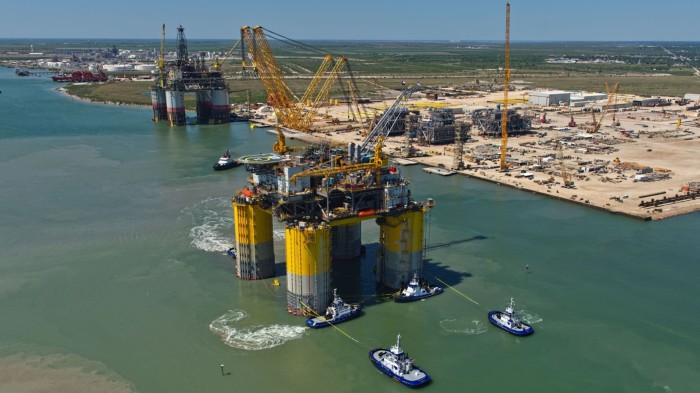Oil megadeals usher in an age of energy uncertainty

Roula Khalaf, Editor of the FT, selects her favourite stories in this weekly newsletter.
Saudi Arabia’s energy minister Prince Abdulaziz bin Salman thinks that the return of the oil mega-deal is “testament” that “hydrocarbons are here to stay”.
His view, echoed by many in the oil sector, is why would Chevron and ExxonMobil drop $120bn-plus combined on buying Hess and Pioneer if they thought oil demand was at risk of heading into decline?
“I don’t think anybody would buy an asset they will have to freeze and not make use of it,” Prince Abdulaziz told a conference in Saudi Arabia on Tuesday.
Mike Wirth, Chevron’s chief executive, certainly says that he sees no imminent peak in oil demand, painting himself as a realist among what he suggests are a growing band of environmental ideologues.
The International Energy Agency, the west’s oil watchdog, is not “remotely right” that all fossil fuels, including oil and gas, will see a peak in demand before the end of this decade, according to Wirth.
“You can build scenarios, but we live in the real world, and have to allocate capital to meet real world demands,” he told the Financial Times last month.
Opec, which Saudi Arabia increasingly dominates, forecast two weeks ago that, rather than peaking, oil demand would rise by about 15 per cent between now and 2045 to reach 116mn barrels a day.
The group’s members accuse the IEA of having become politicised, and have claimed that it has stoked up volatility in oil markets.
For an industry that has been hammered on all sides in recent years, from environmental activists to uncertain investors unsure about its long-term future, it is certainly tempting to believe that oil has got its swagger back.
Peak demand? Maybe not in your lifetime, they say. Just look where the big oil companies are putting their money. Better fire up the rigs unless you want to read about Greta Thunberg’s latest arrest by candlelight.
But it might be a good idea to pause, and think about who the messengers are. Opec energy ministers and oil executives may not, whisper it, be entirely free of bias themselves.
The opposing view is that Chevron and Exxon’s spending spree is not ushering in an extended oil age, but instead reflects what might be dubbed “the new age of energy uncertainty”.
Building scale in the face of a questionable future can be a defensive posture for the oil majors. The smaller independents seem happy to sell. The biggest producers won’t necessarily be badly damaged by a decline in demand if they can pump the barrels that are needed more efficiently than their rivals.
But uncertainty creates fear. And the IEA — once viewed as the gold standard in oil forecasting — has been turned on by many devout believers in the sector.
Fatih Birol, its executive director — who himself once worked for Opec — has been portrayed by some as a turncoat ever since arguing in 2021 that no new oil and gas developments were needed if the world wants to limit global warming to 1.5C under the Paris agreement.
Critics and supporters of Birol’s view alike tend to gloss over the nuance, which is that the view only applied if governments acted to curb fossil fuel demand sufficiently to cut emissions — which, to date, they have not.
Unswayed, this week the IEA released its annual “scenarios” for where they think oil demand is going. While attempting to reflect the huge uncertainty in how energy markets might look in three decades time, it should nevertheless be a sobering read for oil investors.
The agency says that if governments stick with their current policies, oil demand still peaks this decade, thanks to the rapid rise of electric vehicles in China. But consumption won’t fall significantly, instead largely flatlining over the next 30 years.
But in the scenario where governments follow through on environmental pledges already made — but not yet fully implemented as policy — the picture changes dramatically. Oil demand will almost half by 2050, to just 55mn barrels a day.
Going one step further, in the IEA’s most ambitious “net zero” scenario, if governments get serious about the 1.5C target, then oil demand will practically collapse over the next 25 years, falling to roughly a quarter of its current level.
You can of course believe that the IEA have got this wildly wrong. Or that governments will grow tired of addressing climate change, if their populations deem it too complicated or expensive.
But within the wide ranges and uncertainty of the IEA scenarios is a glimpse into what the likely path is for the oil sector. Investors should be careful about swaggering blindly towards it.
david.sheppard@ft.com
Letter in response to this article:
Oil majors have ‘destroyed value’ for shareholders / From Leonard Hyman, Sleepy Hollow, NY, US
Comments